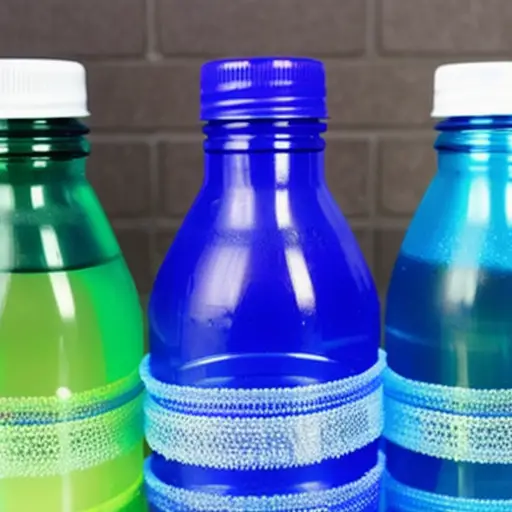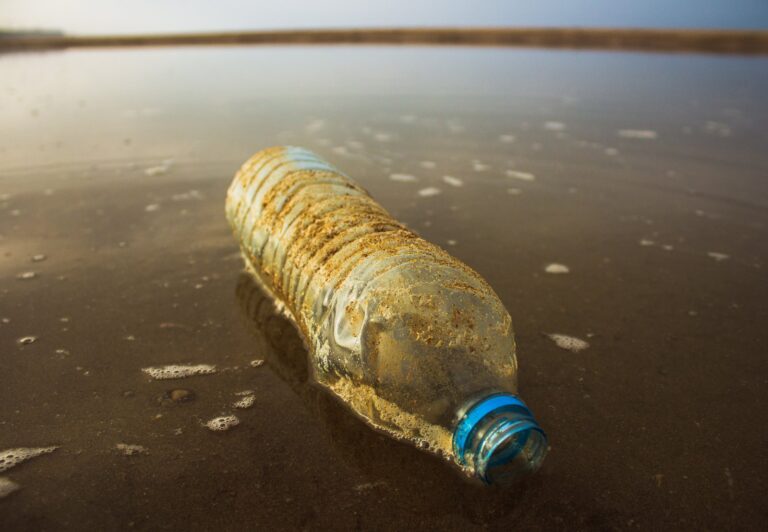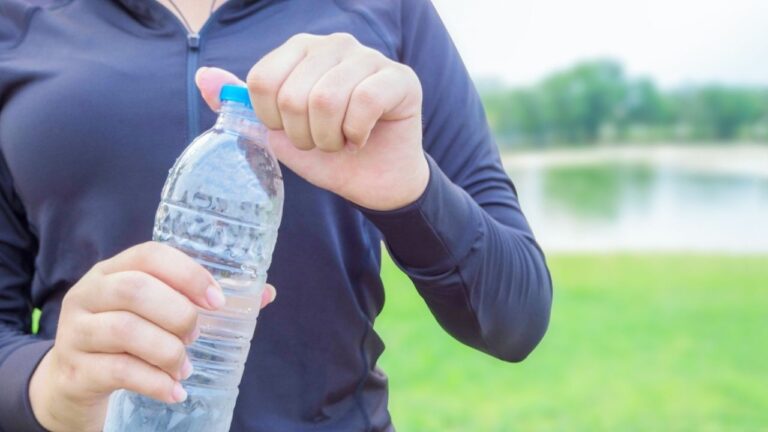We all know that staying hydrated is crucial for our health, especially during the scorching summer days. And carrying around a plastic water bottle seems like the most convenient and affordable option. But have you ever wondered whether reusing plastic water bottles is a good idea or not? After all, we’ve all heard rumors about the harmful effects of plastic on our health and the environment. So, is it really bad to reuse plastic water bottles? Let’s investigate and find out the truth.
I. Introduction
Explanation of the issue
Plastic water bottles are a common sight in today’s world. They are convenient, affordable, and easily accessible. However, there is an ongoing debate about whether it is bad to reuse these bottles. This article aims to shed light on this issue and provide factual information to help readers make an informed decision.
Over the years, plastic water bottles have gained popularity due to their lightweight and disposable nature. But concerns have been raised about the potential health risks and environmental impact associated with reusing these bottles. These concerns stem from the chemicals that may leach into the water, the bacterial growth that can occur, and the degradation of the plastic.
In this article, we will discuss the different types of plastic used in water bottles and their safety for reuse. We will also explore the potential health risks, including bacterial growth and chemical leaching. Furthermore, we will provide tips on proper cleaning practices and alternatives to plastic bottles, such as glass, stainless steel, and reusable water pouches.
It is important to make informed choices when it comes to our health and the environment. By understanding the facts and weighing the risks and benefits, we can make decisions that align with our values and priorities.
B. Purpose of the article
The purpose of this article is to provide readers with factual information regarding the safety and potential risks associated with reusing plastic water bottles. Many people wonder if it is safe to reuse these bottles due to concerns about chemical leaching and environmental impact. By presenting information from experts and scientific studies, this article aims to educate readers and help them make informed decisions. The article covers various topics, including the different types of plastics used in water bottles, potential health risks, environmental impact, and proper cleaning practices. Additionally, it suggests alternatives to plastic bottles, such as glass, stainless steel, and reusable water pouches. The overall tone of the article is friendly and informative, offering readers the necessary information to make their own choices regarding the reuse of plastic water bottles.
II. The Dangers of Plastic
A. Potential health risks
Potential health risks associated with reusing plastic water bottles are a major concern. These bottles are often made from flimsy material that can get damaged through normal wear and tear, creating tiny cracks and crevices. This increases the chances of chemicals, such as bisphenol A (BPA), leaching into the water. BPA has been linked to fertility issues, breast and prostate cancer, diabetes, and metabolic disorders. Moreover, scratches and cracks in the plastic provide the perfect breeding ground for bacteria, which can be difficult to remove even with thorough cleaning. Studies have even found that uncleaned water bottles contain more bacteria than a dog’s water bowl. The type of plastic used to make the bottle also plays a role in its safety for reuse. For example, bottles made from PET plastic (#1) are intended for single-use and repeated use can increase the risk of leaching and bacterial growth. It is important to consider these potential health risks when deciding whether or not to reuse plastic water bottles.
B. Environmental impact
One major concern when it comes to plastic water bottles is their environmental impact. Disposable water bottles are a significant contributor to pollution and waste. In the United States alone, a staggering 86% of these bottles end up as garbage or litter. This waste is harmful to the environment as it takes at least 1,000 years for a single bottle to decompose, leaking pollutants into the soil and water along the way. The production of plastic bottles also contributes to the depletion of natural resources, as it takes vast amounts of oil and water to manufacture and transport them. Moreover, the bottling process releases 2.5 million tons of carbon dioxide into the atmosphere annually. To combat this environmental harm, it is essential to reduce our reliance on plastic bottles. Alternatives such as glass, stainless steel, and reusable water pouches can help mitigate the negative impact on the environment. By making small changes in our consumption habits and choosing eco-friendly options, we can contribute to a greener and more sustainable future.
III. The Science of Plastic Bottles
A. Longevity of plastic
Plastic has become a ubiquitous material in our daily lives, and its longevity is a key factor in its widespread use. The durability of plastic allows it to withstand various environmental conditions without significant degradation. This means that plastic water bottles can remain intact for a long time, preventing them from breaking down and becoming a hazard in our environment. However, this same longevity also poses a problem when it comes to reusing plastic bottles. Over time, the repeated use and cleaning of plastic bottles can cause wear and tear, leading to the development of cracks and scratches in the surface. These cracks can become breeding grounds for bacteria, increasing the risk of contamination. Additionally, the chemical composition of plastic bottles may also play a role in their longevity. Understanding the chemical makeup of plastic and its potential impacts on our health and the environment is crucial in determining whether it is safe to reuse plastic water bottles.
B. Understanding the chemical make-up of plastic
Understanding the chemical make-up of plastic is crucial when discussing the potential risks of reusing plastic water bottles. Most single-use water bottles are made of polyethylene terephthalate (PET), a clear and lightweight plastic that is approved as safe for contact with food and drink in many parts of the world. There are concerns about chemicals like bisphenol A (BPA) and antimony leaching into the water from the plastic. However, studies have found very low concentrations of these chemicals in PET-bottled water and have not established a definitive link to health risks. It is important to note that leaching and contamination are more likely risks than chemical exposure. Regularly washing and cleaning your water bottle can help reduce the growth of bacteria and ensure its safety for reuse. Other alternative options, such as glass or stainless steel bottles, can also provide a safe and eco-friendly choice.
IV. The Risks of Reusing Plastic Water Bottles
A. Bacterial growth
Bacterial growth in plastic water bottles is a common concern for many people. However, it’s important to understand that bacteria can grow in any type of drinking container if it’s not properly cleaned and dried between uses. The real culprits behind bacterial growth are the bacteria and fungi that can come from our hands, mouth, or even dirt that comes in contact with the bottle. Manufacturers of single-use water bottles note that reusing bottles can lead to tiny cracks, which can make it more difficult to remove bacteria. This applies to any type of drinking container, not just plastic. It’s important to thoroughly clean and dry your water bottle after each use, regardless of the material. Some alternatives to plastic bottles, like glass or stainless steel, may be easier to clean and prevent bacterial growth. So, while bacterial growth is a concern, it’s not exclusive to plastic water bottles and can be easily prevented with proper cleaning practices.
B. Degradation of plastic
One important aspect to consider when discussing the reuse of plastic water bottles is the degradation of the plastic itself. Over time, plastic can break down and deteriorate, especially when exposed to sunlight and certain environmental conditions. This degradation can result in cracks, scratches, and other signs of wear on the surface of the plastic bottle. These imperfections create the perfect environment for bacterial growth, making it more difficult to thoroughly clean the bottle and remove any harmful microorganisms. Additionally, as the plastic degrades, there is a potential for chemicals to seep into the liquid stored in the bottle. While the research on this topic is not conclusive, it is always wise to err on the side of caution and discard any bottles that show signs of degradation.
C. Leaching of chemicals
When it comes to reusing plastic water bottles, one of the concerns that often comes up is the leaching of chemicals. This is when chemicals from the plastic mix with the liquid inside the bottle. However, studies have found that with the right storage and type of plastic, this is not normally a concern with single-use plastic bottles. For example, polyethylene terephthalate (PET) plastics, which are commonly used for water bottles, have been declared safe for single and repeated use by the FDA. It’s important to note that certain plastics, such as those labeled with a 7, may contain bisphenol A (BPA), a chemical that has been linked to disruptions in hormone regulation. If you want to avoid BPA, it’s best to skip polycarbonate bottles and opt for alternatives like glass or stainless steel. Overall, the risk of chemical leaching from plastic water bottles is low if you store and clean them properly.
V. Tips for Reusing Plastic Water Bottles Safely
A. Proper cleaning practices
When it comes to reusing plastic water bottles, proper cleaning practices are essential. Most plastic water bottles are not designed for easy cleaning, which can make this task a bit tricky. However, if you do decide to reuse a plastic water bottle, it is crucial to wash it properly. Start by thoroughly rinsing the bottle with hot water and dishwashing soap. Pay special attention to the areas where your mouth and hand come in contact with the bottle. If the bottle has visible bacterial slime or mold, it is recommended to sanitize it with a dilute bleach solution. Mix 1 teaspoon of bleach and 1 teaspoon of baking soda in 1 quart of water, and let the solution sit in the bottle overnight. Finally, make sure to let the bottle dry completely before using it again. While proper cleaning can help minimize the risk of bacterial growth, it is worth considering alternatives to plastic bottles, such as glass or stainless steel options, which are easier to keep clean and also more environmentally friendly. By following these cleaning practices or opting for alternative bottle options, you can ensure that your reusable water bottle is safe for use.
B. Alternatives to plastic bottles
When it comes to finding alternatives to plastic water bottles, there are a few options to consider. One popular choice is glass bottles. Glass is a durable and non-toxic material that won’t leach any chemicals into your water. Plus, glass bottles are easy to clean and can be reused over and over again. Another option is stainless steel bottles. These bottles are lightweight, durable, and also won’t leach any harmful chemicals. They are perfect for keeping your water cool for hours on end. Lastly, reusable water pouches are becoming increasingly popular. These pouches are made from BPA-free materials and can be folded up when not in use, making them convenient for on-the-go hydration. Overall, choosing an alternative to plastic water bottles is not only better for your health but also better for the environment. So why not make the switch today?
VI. Alternatives to Plastic Water Bottles
A. Glass
Glass is a great alternative to plastic water bottles for several reasons. First, glass is non-porous and doesn’t interact with the water, so there is no risk of chemicals leaching into your drink. Additionally, glass is easy to clean and doesn’t hold onto bacteria or odors like plastic does. You can simply wash it with hot soapy water, and it’s good as new. Glass is also more durable and resistant to wear and tear compared to plastic bottles, so it will last longer. Plus, using glass bottles reduces your environmental impact since glass is highly recyclable. So not only are you taking care of your health by using glass, but you’re also making a positive contribution to the planet. With its stylish and timeless design, glass bottles are a great choice for anyone looking for a safe and sustainable option for their hydration needs.
B. Stainless steel
When it comes to choosing a reusable water bottle, stainless steel is often considered the top choice. And for good reason! Stainless steel bottles are durable, long-lasting, and 100 percent recyclable. Not only are they corrosion resistant, but they also don’t leach any harmful chemicals when exposed to heat or sunlight. Plus, they are a great option for those who are concerned about the environmental impact of plastic bottles. While they may be more expensive than plastic bottles, their longevity and eco-friendliness make them a worthwhile investment. So, if you’re looking for a safe and sustainable option for carrying your water on the go, consider choosing a stainless steel water bottle. You’ll not only be doing your part in reducing plastic waste but also enjoying a high-quality, reusable bottle that will last for years to come.
C. Reusable water pouches
Reusable water pouches are gaining popularity as an alternative to plastic water bottles. These pouches are made from materials like silicone or BPA-free plastic, which are safe for multiple uses. They offer convenience and portability, making them a great option for those on the go. Reusable water pouches are lightweight and foldable, allowing you to easily carry them in your bag or pocket. They are also easy to clean and can be reused multiple times, reducing waste. Moreover, some pouches even come with built-in filters to ensure clean and purified water wherever you are. With their eco-friendly nature and convenience, reusable water pouches are a smart choice for those looking to reduce their environmental impact while staying hydrated throughout the day.
VII. Conclusion
A. Restate main points
In conclusion, there is much debate surrounding the safety of reusing plastic water bottles. However, when considering the potential health risks, it is important to understand that the type of plastic used and proper cleaning practices play a significant role. PET and HDPE plastics, commonly used in water bottles, have been deemed safe for single and repeated use by the FDA. While concerns of chemical leaching exist, studies have shown that the levels of leached chemicals, such as BPA and antimony, are very low and unlikely to pose a significant health threat. Bacterial growth is a greater concern, as plastic bottles can harbor harmful bacteria. Therefore, if you choose to reuse plastic water bottles, it is essential to wash them thoroughly and regularly. Alternatively, opting for reusable glass or stainless steel bottles can eliminate these concerns altogether. Ultimately, the decision to reuse plastic water bottles should be based on personal preference, convenience, and environmental impact.
C. Final thoughts and recommendations
The decision to reuse plastic water bottles ultimately comes down to personal preference and consideration of potential health risks and environmental impact. While it is generally safe to reuse plastic water bottles that are in good condition and properly cleaned, concerns about bacterial growth and chemical leaching should not be overlooked. It is important to note that different types of plastics have varying levels of risk for chemical leaching, with PET and HDPE plastics being considered safer options. However, alternatives such as glass, stainless steel, and reusable water pouches offer even better options for both health and the environment. These alternatives eliminate the risk of chemical leaching and bacterial growth, making them a more reliable choice. Ultimately, prioritizing the use of reusable bottles over single-use plastic bottles is not only safer but also more eco-friendly. By making informed choices, we can contribute to a healthier and more sustainable future.




